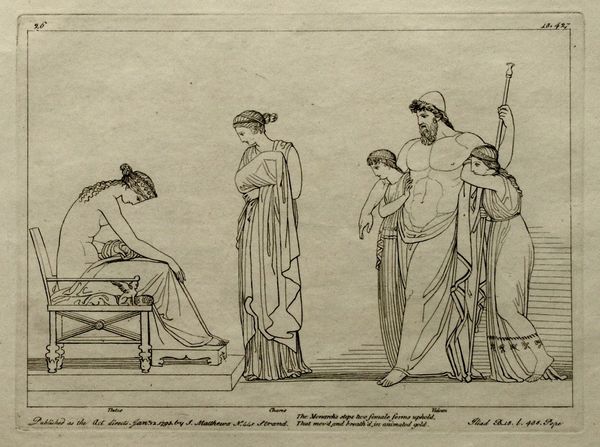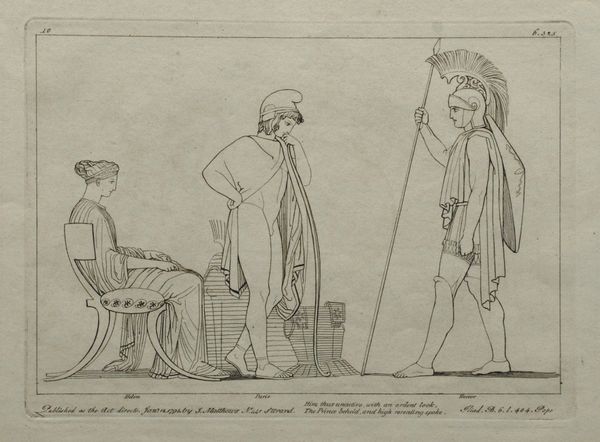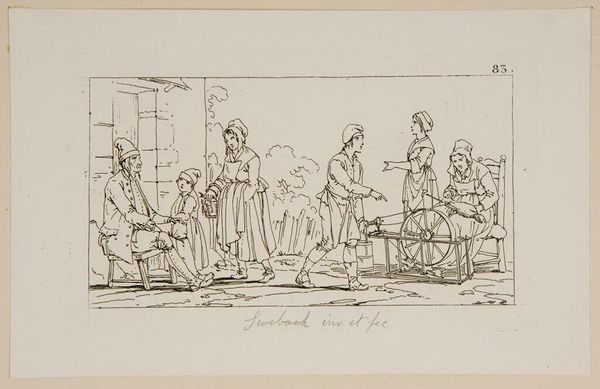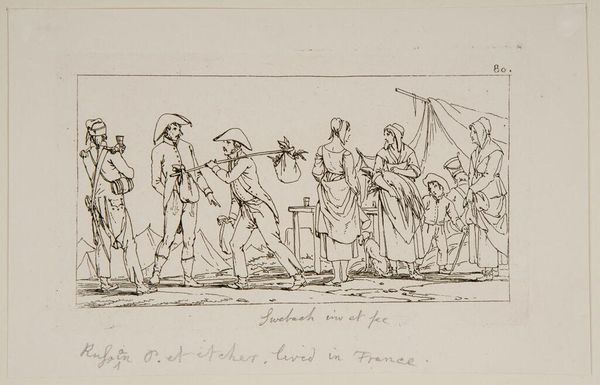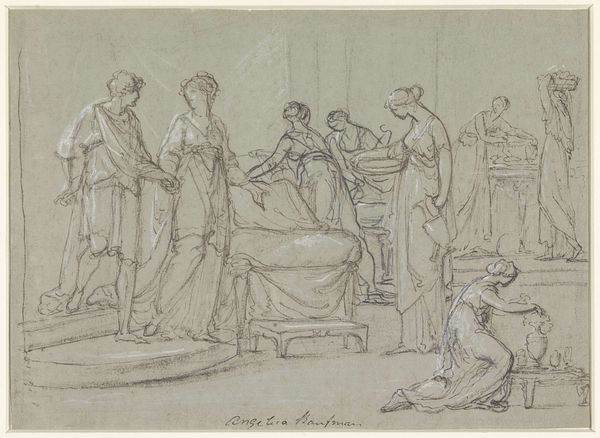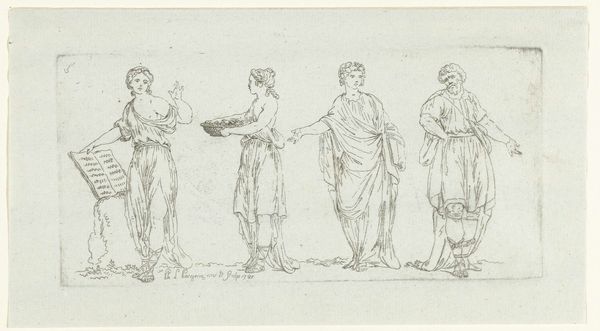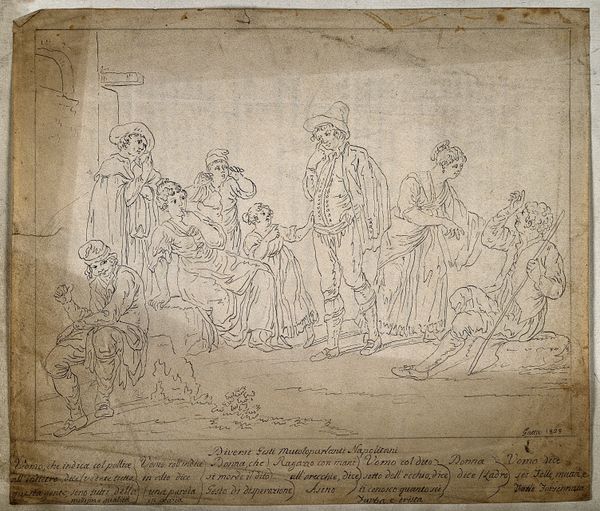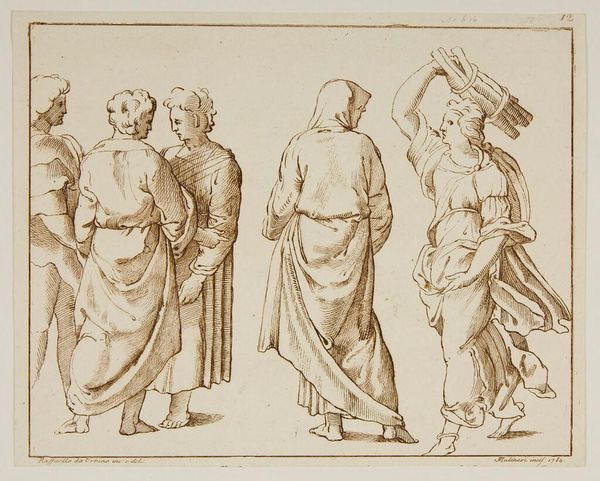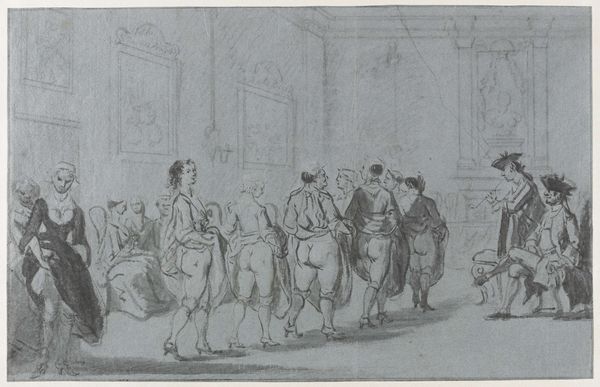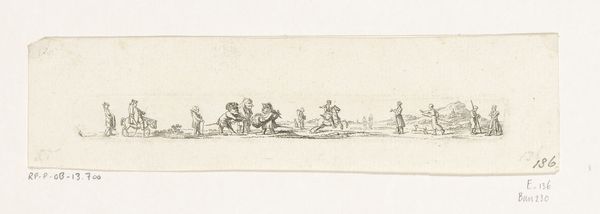
drawing, etching, ink, pen
#
portrait
#
drawing
#
narrative-art
#
neoclassicism
#
etching
#
figuration
#
ink
#
ancient-mediterranean
#
pen-ink sketch
#
line
#
pen
#
history-painting
Copyright: Public domain
Editor: This is John Flaxman's "Illustration to the Iliad, 1st chant," created around 1795, using pen, ink, and etching. The stark lines create a world that feels both ancient and modern, almost like a contemporary graphic novel. What resonates with you most when you look at this? Curator: The reduction to essential lines is key. Flaxman strips away detail to expose archetypes, these figures become symbolic representations rather than portraits. Think of the seated figure at the far left. Does that posture, that melancholic repose, remind you of anything? Editor: It feels very classical, like a Greek tragedy. The stillness is powerful. Curator: Exactly. That posture, with head resting on her hand, is a visual trope, a gesture of mourning and contemplation we see echoed through centuries of art. Flaxman is tapping into a shared visual language. He’s relying on the viewer to bring cultural memory to the image. And what of the Medusa shield? Editor: I almost missed it. It's subtly placed, but definitely ominous. Curator: It speaks of the lurking dangers and divine interventions inherent to Homer’s world, doesn't it? Flaxman is using that single symbol to evoke the whole mythological framework of the Iliad. The procession evokes continuity. What is about to be said, is has already been said. The symbolic weight remains. Editor: It's fascinating how much meaning can be conveyed with so few lines. I thought it was simple, but it's incredibly layered. Curator: Flaxman’s genius is in distilling these complex narratives and emotions into such pure, enduring forms.
Comments
No comments
Be the first to comment and join the conversation on the ultimate creative platform.
